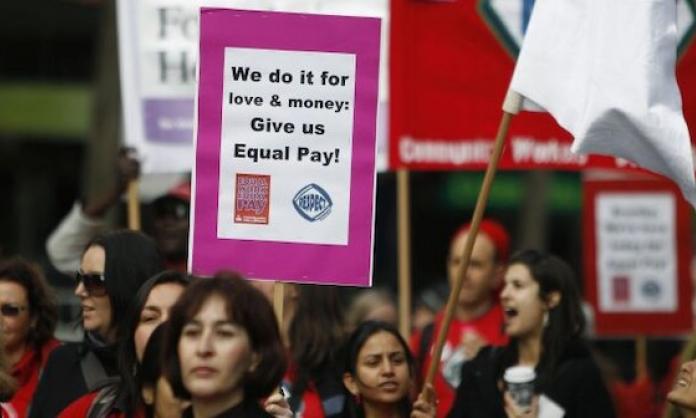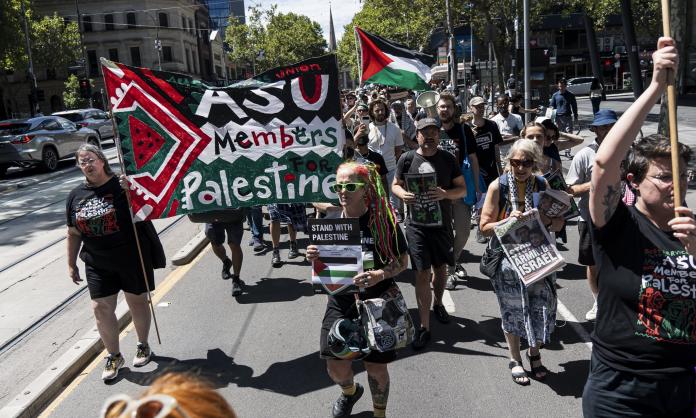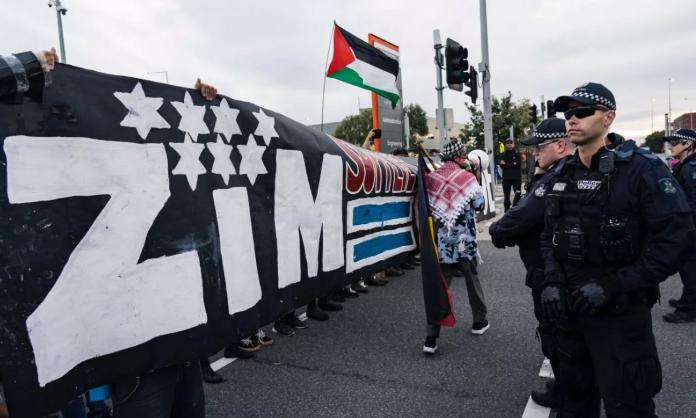A significant rebellion has unfolded in the Victorian branch of the Australian Education Union over ratification of the new Victorian Government Schools Agreement (VGSA). Thirty-nine percent of delegates elected from school-based sub-branches voted against ratification of the new VGSA, which governs the pay and conditions of more than 70,000 teachers and education support staff in Victorian government schools. In the greater Melbourne area, 44 percent of delegates voted no. This is more than double the no vote in the 2017 VGSA ratification, when only 18 percent of sub-branch delegates voted against ratification, with 82 percent in favour.
The sizeable no vote shows a split between large sections of the membership and the Victorian leadership of the union. The new VGSA was endorsed unanimously by the union’s Victorian State Council. Union officials and organisers spent weeks speaking at meetings to get their agreement across the line.
The union leaders ridiculed the idea that voting no could be the start of a serious industrial campaign to win better conditions. They claimed that negotiators would have to return to the very start of the year-long process that led to the proposed agreement, meaning no pay rises for the indefinite future.
That nearly 40 percent of delegates (823 out of 2,095 votes cast) voted to reject the deal is a major achievement for the many rank-and-file unionists who dedicated time and energy to arguing against the proposed agreement. These activists are the key to the significant oppositional vote.
There had been consistent advocacy by some AEU members in the leadup to this bargaining round about the crucial importance of workload concerns. As a result, many sub-branches passed motions calling for a reduction in face-to-face teaching.
Once the proposed agreement was on the table, a group of activists who had come together to organise for better COVID-19 protections in schools produced a document analysing the proposed new VGSA, comparing the ambitious AEU log of claims with the actual poor result. This was shared in dozens of schools, helping to increase the confidence of many who felt that the proposed agreement sold them short.
A key issue fuelling the significant no vote was pay. The VGSA promises annual pay rises of only 2 percent—when inflation last year ran at 3.5 percent, petrol is now more than $2 a litre, and pretty much every business in the country is talking about more price rises to come. Allowances worth an extra 2 percent in the first year, and a one-off increase of around 10 percent for low paid education support staff took some of the edge off this low headline rate—but still left plenty of room for discontent.
One of the demands in the union’s log of claims was that the Victorian government fund schools adequately, to enable the conditions in the agreement to be properly implemented. The importance of full funding was brought home by the revelation that one of the significant benefits promised by the new agreement—time in lieu for staff attending school camps and other out-of-hours excursions—was not accompanied by any extra funding for schools. This would leave school-level management to either find the money by sacrificing the school budget elsewhere, or charge parents and guardians prohibitive fees for the activities, which would exclude students from less well-off households.
The main issue for teachers was workload. After a long campaign by union members, this is the first agreement that promises to significantly cut classroom teaching time—by 90 minutes per week by 2024. However, the four annual professional practice days introduced in the last VGSA to assist with workload issues would be reduced to one day per year, and there is a sunset clause on the 90-minute reduction, which is not included in the VGSA itself but in a side agreement.
Though COVID-19 doesn’t feature much in the agreement or the debates around it, it’s arguable that the pandemic also played a role in the significant no vote. Despite the extremely tough conditions school staff have endured during the last two years, COVID-19 has not to date generated much rank-and-file reaction. This is no doubt partly due to a global pandemic seeming well-nigh unstoppable, especially with governments largely “letting it rip” (including in Victoria) and unions doing little to distance themselves from state government employers.
However, a set-piece contest over wages and conditions can provide an outlet for some of the discontent felt over the effects of the virus. To come through the last two years, face ongoing threats to health on a daily basis, and then to be offered only 2 percent more pay was the last straw for many union members.
So there is plenty of fuel for discontent in schools, as in many other workplaces. State governments’ self-imposed pay caps (2.5 percent including superannuation in New South Wales, 1.5 percent in Victoria) are colliding with the reality of rising inflation—and the knowledge that while the working class has battled through the pandemic, billionaires have doubled their wealth over the past two years.
But to turn this discontent into organised opposition will require much work. Rank-and-file activism and networking is crucial because it cuts against the isolation of more active or politicised union members in our individual workplaces. This is certainly the case with the AEU.
There are functioning union sub-branches in many hundreds of schools in Victoria, but there is little coordination or even connection between active unionists in them. This leaves any connection between sub-branches in the hands of the central office, which is subject to conservative and bureaucratic pressures.
Adding to the weight of the officials in pushing a deal through is the general decline in industrial action—the product of well-organised class collaboration and vicious anti-strike laws—which reduces the self-confidence of the rank and file. And the general decline of the left over recent decades means there are fewer politicised militants like those who formed the basis for serious rank-and-file challenges in the past. It is no coincidence that some of the most active networks in the agitation around the VGSA included long term socialists (including members of Socialist Alternative, which publishes Red Flag) who had the political confidence and organising skills to help challenge the conservative approach of the officials.
Obviously, the opposition fell short on this occasion. The proposed new agreement will now be put to an all-staff ballot. The state government and union leaders will be at a considerable advantage in pushing the deal through, given that non-union members also get a vote.
The networks of active opponents to the deal simply weren’t extensive enough to carry an argument across the state’s 1,500 government schools and 29 regional ratification meetings. Nevertheless, it’s an impressive achievement that a collection of loosely organised unionists could help turn the vote into a contest, and win over almost 40 percent of members, in spite of the vigorous efforts of the union leaders.
Regardless of the outcome, the significant no vote is a step forward for unionists in education and beyond. It signals the possibility of effective opposition to employers and union leaders who try to push through substandard agreements on a workforce that’s been slammed by the pandemic. The union members who organised, spoke and voted against the deal have shown unionists everywhere that there is nothing inevitable about such deals being pushed through—and they’ve created a foundation to build on in rebuilding an active voice for rank-and-file union members in the future.










